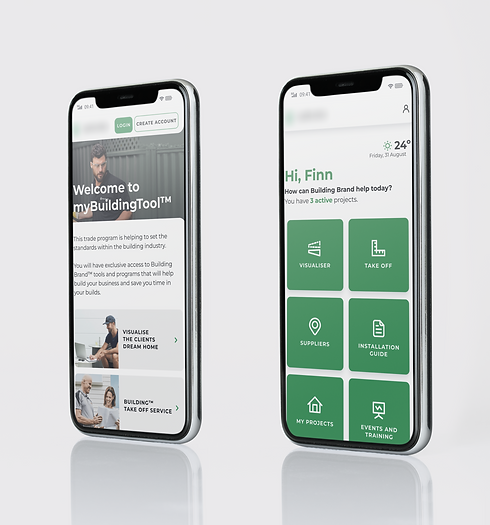
A digital pocket tool for builders
During a 5-day design sprint, we wanted to solve a complex business problem for a leading industry Building Brand (see sprint goal below) by rapidly ideating & testing a potential digital tool with multiple features for builders.
The tool will be referred to as ‘myBuildingTool’ throughout this case study.
Just a headsup that there were no low fi wireframes because we had a baseline of pitch designs to work from.
scroll

Setting the stage
Why a design sprint?
A design sprint, developed by Google Ventures, is a 5-day process designed to address critical business questions efficiently. By employing rapid prototyping and testing, it allowed our team to quickly gather user insights without fully building the product. We chose to implement this method because it fosters collaboration and aligns innovative solutions with both user needs and business goals.
Sprint goal
We aimed to reimagine the existing builder engagement program and establish a leading brand in the building industry as a valued partner for small-medium builders. To achieve this, we focused on developing a UX strategy that prioritised understanding the unique needs and pain points of our target audience, setting clear objectives for the design process, and ensuring that our proposed solutions aligned with broader business goals.
Sprint team
I co-facilitated the sprint alongside our design director. The sprint participants included a multidisciplinary team which were a visual designer, tech lead, account manager, strategist, marketing lead, and 2 builders, all working together to ensure a user-centred approach and strategic alignment.
Sprint process

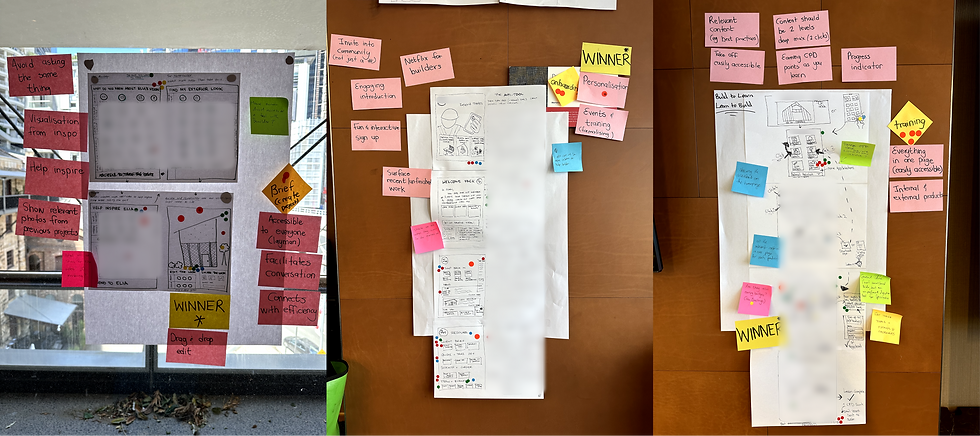
What we built & learned
During the sprint, we crafted 3 main ‘how might we’ statements to help us reframe problems builders were facing as opportunities for innovation and improvement. Below I’ve outlined the 3 statements, the winning ideas that were generated to address them and a fact to support the validity from our testing with 6 builders.
How might we help builders demonstrate the Building Brand’s solutions visually to homeowners?
Visualiser tool
A tool where the builder on the go can answer a few simple questions with the homeowner to help them visualise their dream home through a product rendered image.
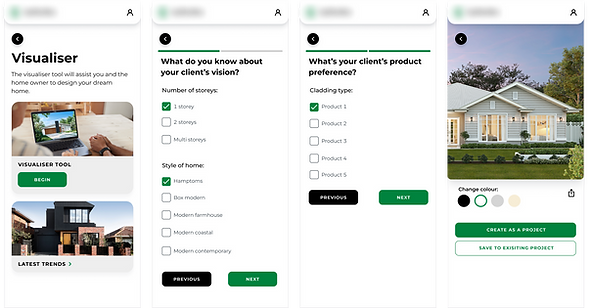
Testing fact
6/6 participants commented that the visualiser is ‘good’ and ‘useful’ – especially at the beginning stages of a project before a designer or architect gets involved and to help visualise the direction the client is interested in.
How might we create a seamless experience for quoting and supplying on time?
Take off tool
A tool for builders to add all their building specification and they receive an accurate estimation for product quantity orders.
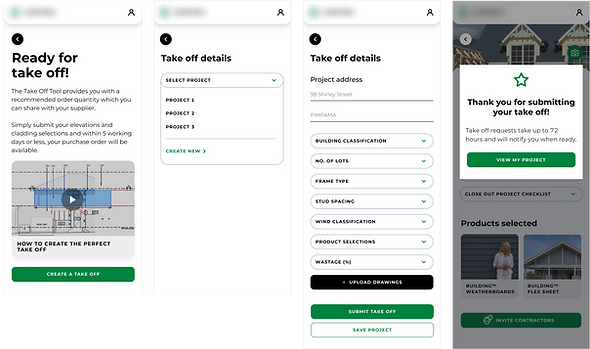
Testing fact
The take off tool was the most attractive feature to builders on the dashboard with 6/6 participants mentioning that it will be useful to them.
How might we support builders through product training and advise them on compliance?
Online installation guides
A tool that builders can access anywhere, any time to brief and train their contractors to enable a quality install of the Building Brand's products.
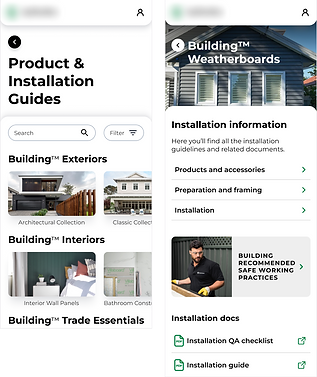
Testing fact
All participants were keen on using the installation guides because they change over the years and it's good to have it in your pocket and just click/tap on it.

Improvement opportunities
Simplify the project page to house the key utilities
The page needed to be stripped down or redesigned to remove are clarify the options that research participants found irrelevant or said they wouldn’t engage with under ‘Projects’, i.e., inviting sub-contractors, my orders & close out checklists.
Keep the sign-up process as the final step for utilities usage
Builders should be able to try out the tools (take off & visualisation) before they create an account or profile. That means the sign-up experience is moved to the end, which makes it their final step in the experience.
Redesign a more comprehensive visualisation tool
The visualisation tool will be a very powerful utility in builders’ pockets, but it must be done right. The prototype was rudimentary to test it as a concept but needs to be further refined in collaboration with the Building Brand team to ensure it hits the mark in terms of where in the user’s journey it is used, and which features it would ideally have. This way, we ensure that myBuildingTool is a more efficient platform than builders’ current approaches.
Create a more robust learning and events experience
The platform should includes more information around the purpose and goals of the learning modules and events. The examples we tested with in the prototype were not comprehensive which made it challenging for the participants to relate to and get a real feel of what the experience could be. We need to collaborate with the James Hardie team to build out a more comprehensive experience to ensure that the content is relevant, fun, and engaging for builders.

Outcome
Our goal with this design sprint process was to reimagine the existing builder engagement program and establish the Building Brand as a valued partner for small-medium builders.
Through an accelerated ideation and validation process, we had the building blocks to expand and create a robust toolkit to help the Building Brand achieve this goal. After the sprint, we built on our initial prototype/designs and the final product was released in September 2023. Below are a few snapshots from the experience or you can check it out for yourself.
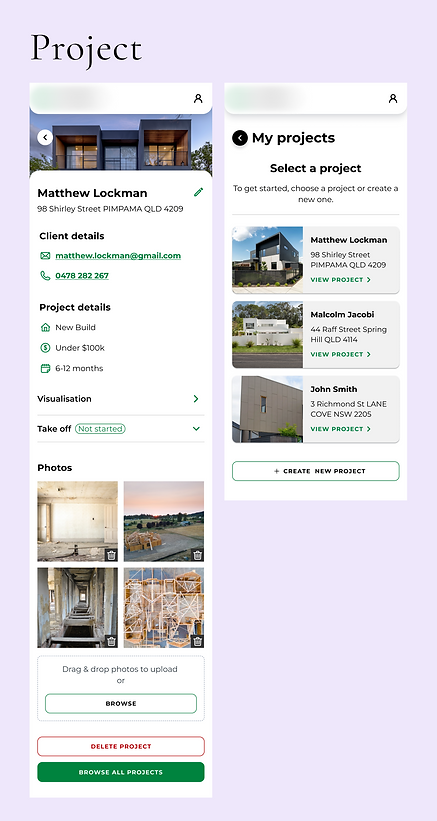
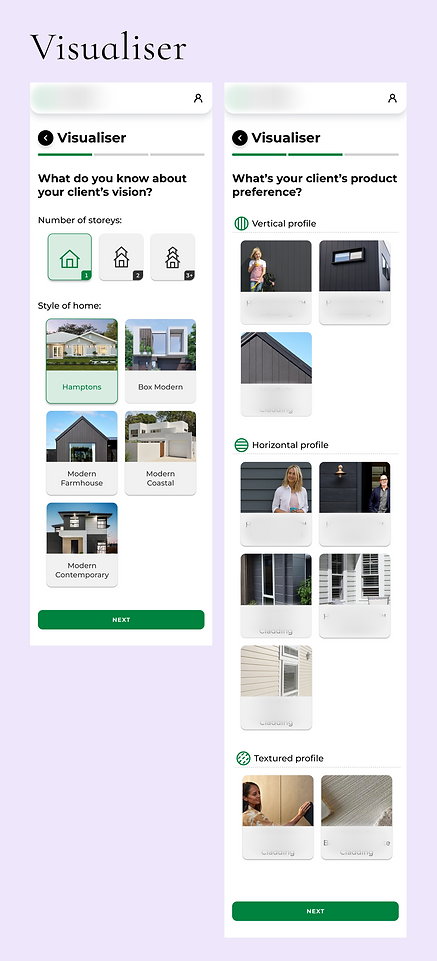
Read the follow-up case study
Throughout this process, we learned that the Building Brand doesn't have a holistic overview of key touch points between their different target audiences (home owners, builders and architects/designers).
To help them identify key opportunities, we ran a series of workshops to create an omnichannel customer journey map. Read my next case study to see how we approached this strategic customer experience piece.

